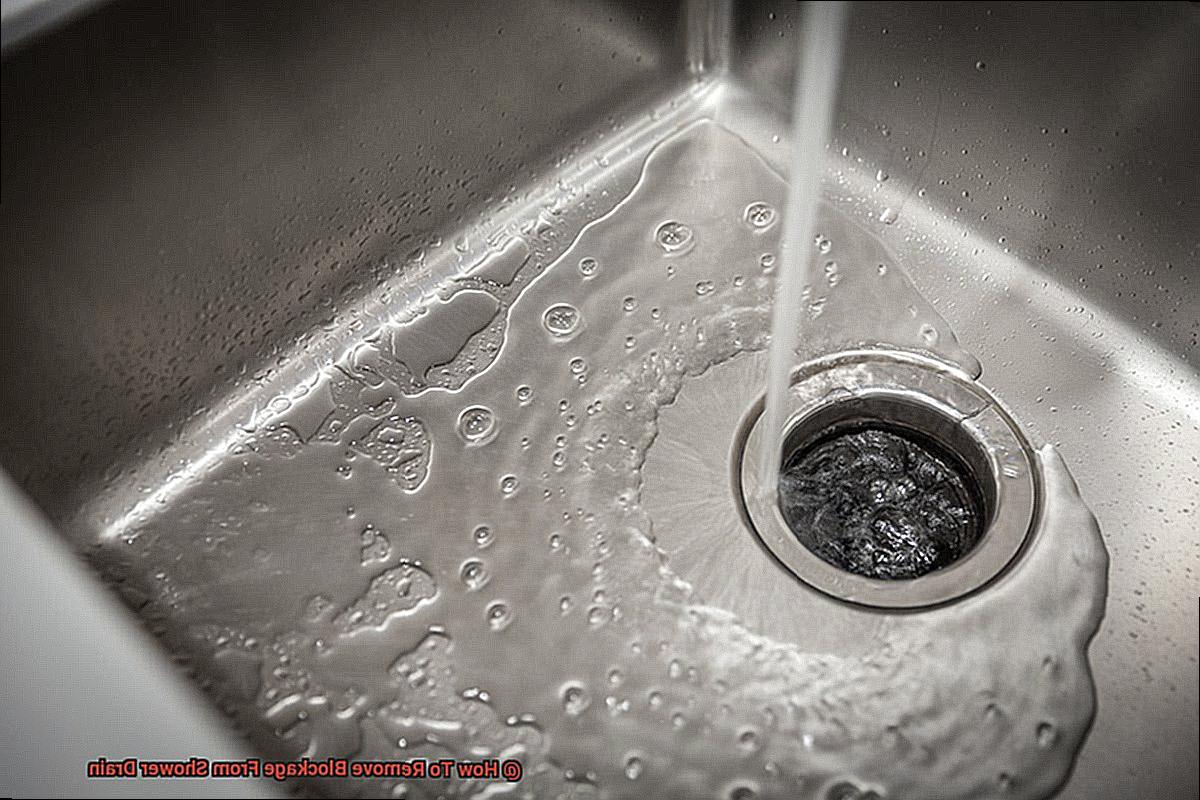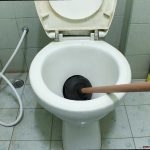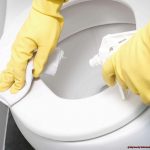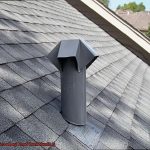Are you tired of standing ankle-deep in water while taking a shower? Does the thought of a slow-moving drain make you cringe? It’s time to face the music: your shower drain is probably clogged. Don’t worry, it’s a common problem that most homeowners face. But, if left unaddressed, it can lead to bigger problems like water damage or even mold growth.
But fear not. Removing blockages from shower drains is not as complicated as it sounds. All you need are some basic tools and a willingness to get your hands dirty (literally.). In this post, we’ll guide you through the step by step process of unclogging your shower drain.
We’ll cover everything from identifying the root cause of the blockage to preparing the necessary tools for the job. And don’t worry about damaging your pipes – our tried and tested methods will ensure that everything stays intact.
So, let’s roll up our sleeves and dive into How To Remove Blockage From Shower Drain. With our help, you’ll be back to enjoying a relaxing shower in no time.
Contents
Identifying the Source of the Blockage
It can be frustrating, but before you rush to call a plumber, there are some steps you can take to solve the problem yourself. The first step is to identify the source of the blockage.
There are several common causes of blockages in shower drains, including hair, soap scum, and mineral buildup.
Hair is a notorious culprit, as loose strands can get caught in the drain and accumulate over time, ultimately leading to a blockage. Soap scum is another common cause of blockages, as it can leave behind a residue that builds up over time and creates a blockage.
Mineral buildup is also a potential source of blockages in shower drains, especially in areas with hard water that contains high levels of minerals like calcium and magnesium.
To identify the source of the blockage, start by removing any visible debris from the drain. Use a pair of tweezers or pliers to pull out any hair or other debris that you can see. If this doesn’t solve the problem, try using a flashlight to look inside the drain and see if there is any buildup or debris further down the pipe.
If you still can’t find the source of the blockage, don’t worry. You may need to use a drain snake to clear any buildup that may be further down the pipe. A drain snake is a flexible tool that can be inserted into the drain and used to break up and remove any blockages.
Once you have identified the source of the blockage, it’s time to take action. There are several effective methods for removing blockages from shower drains. One of the most popular ways is by using a plunger. This method works best for blockages caused by hair buildup or soap scum. Place the plunger over the drain, press down firmly and pull up on the plunger to create suction. Repeat this process several times until the blockage is cleared.
Another effective method for removing blockages from a shower drain is by using a plumbing snake. To use this method, insert the snake into the drain and turn it clockwise while pushing it forward. Continue turning and pushing until you feel resistance, then pull back on the snake while continuing to turn it. Repeat this process until you feel no more resistance.
In some cases, you may need to physically remove the blockage by removing the drain cover. Use a screwdriver to remove the screws holding the cover in place.
Using a Plunger to Remove the Blockage
A clogged drain can be a real headache, but using a plunger is a simple and effective solution. As an expert, I am here to guide you through the process.
First, remove any drain covers or stoppers to give the plunger unobstructed access to the drain. Then, fill the shower with enough water to cover the head of the plunger. This will help create suction and increase the effectiveness of the plunging.
Now, place the plunger over the drain and press down firmly to create a tight seal. Ensure that no air is escaping around the plunger. Begin plunging up and down vigorously, maintaining the seal between the plunger and the drain.
After several plunges, remove the plunger and check if the water is draining properly. If not, repeat the process until the blockage clears. Dispose of any debris removed from the drain properly.
It’s important to note that using a plunger may not work for more severe blockages or those caused by foreign objects.
In such cases, it may be necessary to use a plumbing snake or seek professional assistance. Always avoid using chemical drain cleaners as they can damage pipes.
Using a Plumbing Snake to Remove the Blockage
Using a plumbing snake to remove blockages from shower drains is an easy and effective solution. As an expert with years of experience, I am here to guide you through the process.
A plumbing snake is also known as a drain auger. This flexible metal cable with a spiraled tip can be inserted into the drainpipe to dislodge and break up the blockage. To get started:
- Remove the drain cover and insert the tip of the snake into the drainpipe.
- Turn the handle on the snake to extend the cable further down the pipe. Keep turning until you feel resistance, which indicates that you have reached the blockage.
- Now it’s time to unleash your inner Hulk. Turn the handle in the opposite direction to break up and dislodge the blockage. The resistance may make you feel like it’s impossible, but keep turning until you can move the cable freely through the pipe.
- Once you’ve conquered and dislodged the blockage, slowly pull out the cable while continuing to turn it to remove any debris that may be attached to it.
- To ensure a job well done, run hot water down the drain to flush out any remaining debris.
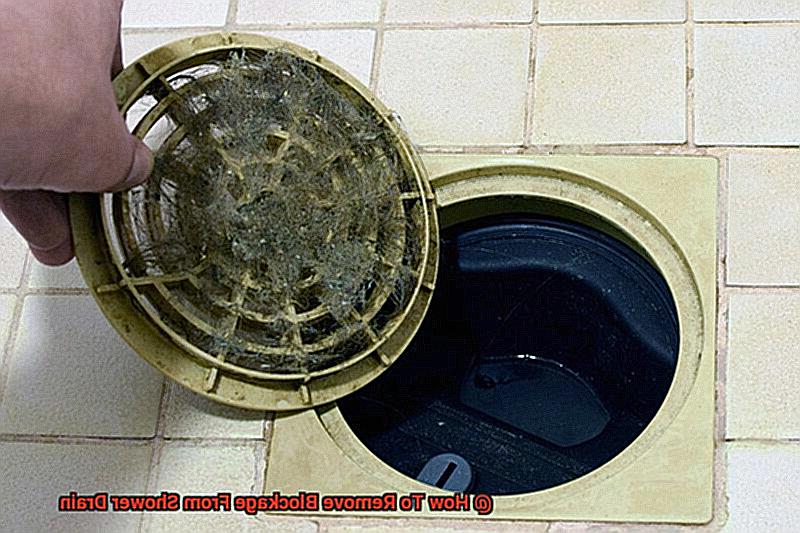
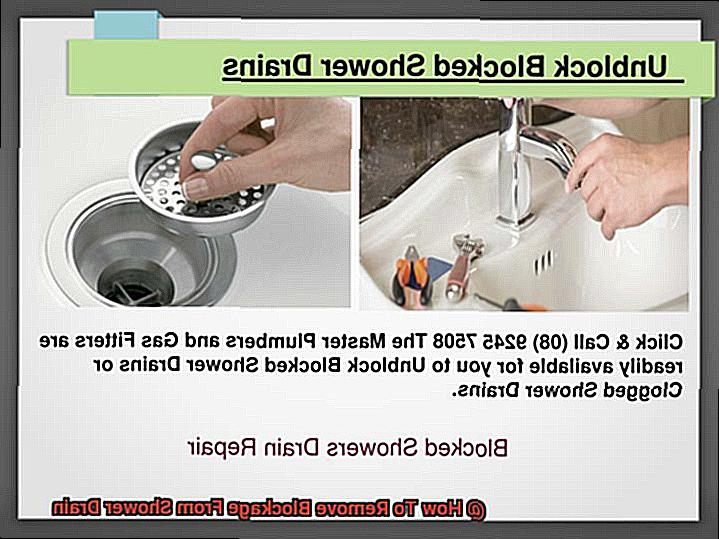
It’s important to remember that if you’re not comfortable using a plumbing snake or if your attempts at removing the blockage are unsuccessful, call a professional plumber. Remember, attempting DIY fixes without knowledge or experience can lead to further damage and costly repairs.
Removing the Drain Cover and Physically Removing the Blockage
The culprit may be a clogged drain. Fear not, as we have the solution. In this section, we’ll walk you through the steps to physically remove the blockage by removing the drain cover.
Before diving in, gather your supplies – gloves, flashlight, and screwdriver. Then, locate the screws or clips holding the drain cover in place and remove them with a screwdriver or your bare hands. Don’t forget to keep them safe.
With the drain cover removed, shine a flashlight into the opening to search for any visible debris like hair or soap scum. If you can see and reach it with your fingers or pliers, carefully extract it and dispose of it in a trash bag.
If you cannot see or reach the blockage from above, it may be time to use a tool such as a drain snake or plunger. Check out section 6 for tips on using these tools effectively.
Once you have removed any visible blockages from the drain, replace the drain cover and secure it with the screws or clips previously removed. Now test your shower to ensure that water is flowing freely down the drain again.
To avoid future clogs, make sure to dispose of any blockages properly and clean your shower drain regularly.
Safety Precautions When Removing a Shower Drain Blockage
Dealing with a blocked shower drain can be an irritating problem, but it’s important to prioritize safety when removing a blockage. Taking necessary precautions can prevent any accidents or damage.
The first step to take when removing a blockage is to turn off the water supply to your shower. This will prevent any water from flowing while you’re working and help you avoid any potential accidents. Additionally, wearing protective gear such as gloves and safety glasses is essential to keep your hands and eyes safe from any potential hazards.
It’s important to remember not to use any harsh chemicals or tools that could cause harm to yourself or damage your pipes. Instead, opt for gentle cleaning solutions and tools like a plunger or plumbing snake. If using a plunger, ensure that the area around the drain is free of any objects that could get sucked into the plunger or obstruct the flow of water.
When using a plumbing snake or auger, be mindful not to force it too hard as this can damage your pipes. Always read and follow the instructions on any cleaning products you use and never mix different chemicals as this can create dangerous fumes or reactions.
If you encounter any problems or feel unsure about how to proceed, don’t hesitate to seek professional help from a plumber. Attempting to fix a blockage yourself without sufficient knowledge or experience can lead to costly mistakes and potentially dangerous situations.
To sum up, removing a blockage from your shower drain can be done safely by following these essential safety precautions. Protect yourself and your plumbing by taking the time to gather supplies beforehand and dispose of any blockages properly to prevent future clogs.
VccW_YmPGxg” >
Conclusion
In conclusion, a clogged shower drain can be an absolute nightmare for homeowners. Not only can it cause water damage, but it can also lead to the growth of unsightly mold if left unaddressed. But fear not. Removing blockages from shower drains is actually easier than you might think.
By following the step-by-step guide provided in this article, you’ll be able to quickly identify the root cause of your blockage and gather all necessary tools for the job. From plungers to plumbing snakes and even physically removing the drain cover, there are several effective methods for tackling stubborn blockages.
However, it’s important to prioritize safety when dealing with a clogged shower drain. Be sure to turn off the water supply before getting started, wear protective gear, and avoid using harsh chemicals or tools that could cause harm to yourself or damage your pipes.
With gentle cleaning solutions and tools at hand, minor blockages caused by hair or small debris can be easily removed. But if you run into any issues or feel unsure about how to proceed, don’t hesitate to call in a professional plumber for assistance.

